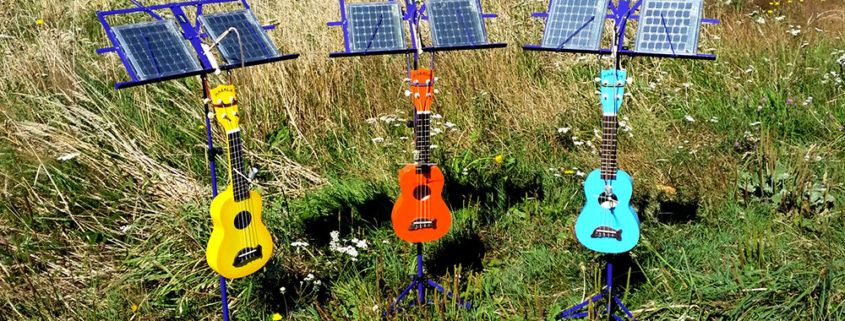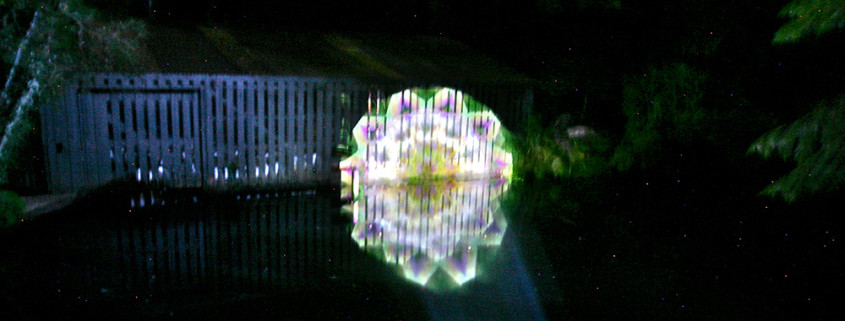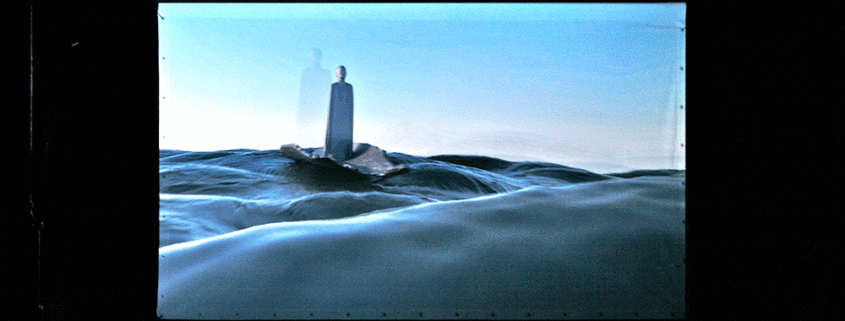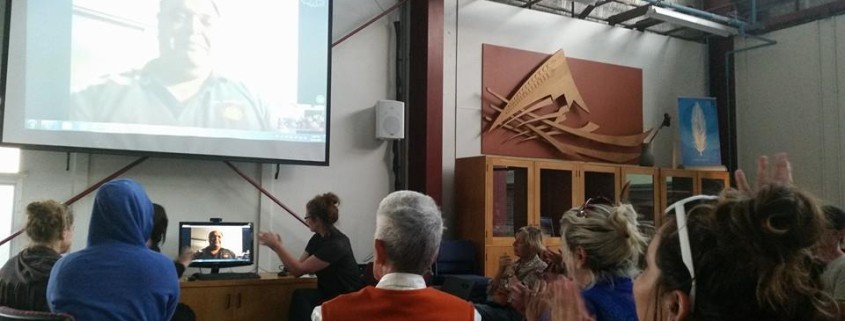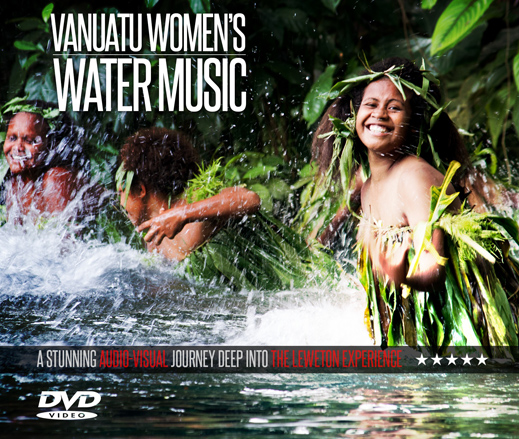Tertarik Sebagai Agen Judi Slot Terpercaya? Ikutilah Serangkaian Cara Yang Beda Ini Ya
/in Featured /by Trudy LaneTertarik Sebagai Agen Judi Slot Terpercaya? Ikutilah Serangkaian Cara Yang Beda Ini Ya
Khilaf satu permainan yang sudah muncul serta menyenangkan pada saat ini telah memikat semua perhatian warga. Dimana para bangsa yang sangat bahagia bermain adalah satu diantara masyarakat yang senang bermain judi Slot Terpercaya. Permainan di dalam saat sungguh bermacam – macam bentuk dan modelnya. Dimana setiap orang tentu memilih sebuah permainan yang akan pas atau sesuai dengan karakteristiknya. Sehingga di setiap orang yang permainan di dalam produk betting judi slot terpercaya akan luar biasa cocok dengan kepribadiannya. Pada saat melakukan pemilihan permainan yang sangat unik dan bermacam – ulah di google tersebut mereka pasti telah mensurveinya.
Sehingga mereka telah menemukan salah satu permainan yang sangat cocok dengan puaka dan sifat tersebut. Sehingga nantinya tersebut akan sangat supel dalam bermain judi slot yang luar biasa seru ini loh. Adanya permainan pertaruhan slot ini sudah mengubah mindset / pola pikir seorang pemain untuk dapat menghasilkan permainan. Yang mana mereka yang tadinya hanya ingin bermain judi slot oleh karena itu sekarang para pemain ingin menjadi distributor. Sehingga mereka menitikberatkan informasi yang luar biasa jelas dan terbukti bagaimana sih caranya untuk menjadi seorang agen tersebut. Jelas tidaklah mudah untuk mencari cara yang tepat menjadi agen bukan.
Tertarik Menjadi Wakil Judi Slot Terpercaya? Ikutilah Serangkaian Jalan Yang Unik Itu Ya
Menjadi Distributor Judi Slot Nomor satu Haruslah Menguasai Permainanya Dahulu
Manjadi ssalah satu agen judi Slot Terpercaya ini tentunya mesti bisa menguasai semata permainan di pada permainannya. Dimana bukan semua orang ataupun pemain yang terdapat dalam permainan pertaruhan ini memiliki pengetahuan terbaik akan produk judi slot itu ya. Sehingga pra menjadi agen nantinya haruslah bisa melalui tes seperti kepandaian dalam bermain akur. Sebelum memutuskan untuk menjadi seorang wakil judi slot tersebut para pemain muda maupun pemain lelet ini harus mampu menguasai seluk beluk permainannya ya. Sebagai seorang agen tersebut tentunya memiliki yang namanya tanggung jawab raksasa ya.
Harusah Menyimpan Modal Besar Pada Menjadi Agen Betting Slot
Untuk menjadi salah satu wakil terbaik dari produk judi slot tersebut haruslah bisa punya modal yang luar biasa besar dalam memainkannya. Dimana jumlah perlengkapan yang akan dikau persiapkan ketika sebagai salah satu distributor judi slot terkemuka ini yaitu 10 kali lipat kian besar dari para pemain judi. Sehingga dengan begini dikau akan selalu mampu merasakan yang namanya kesenangan saaat permainan ini ya. Kita tahu sendiri kalau menjadi salah satu agen judi slot ini haruslah punya modal yang raksasa pada saat hendak memainkannya ya. Tak hanya memiliki skill atau kemampuan terbaik pada saat menjadi seorang agen akur dimana anda juga harus menguasinya.
Mendaftarlah Pada Situs Pertaruhan Slot Yang Nomor satu
Langkah terkakhir tatkala anda ingin menjadi salah satu agen pertaruhan Slot Terpercaya ini oleh karena itu ada baiknya jika mendaftarnya terhadap situs terpercaya. Setelah kamu memiliki modal yang sangat besar pada sertai dengan penguasaan terhadap permainan itu. Maka ada baiknya jika langsung aja mendaftarkan diri terhadap website terpercaya dari situs judi tersebut.
Nah itulah beberapa informasi terbaik agar dikau bisa menjadi khilaf satu agen judi Slot Terpercaya yang sangat dahsyat dan menakjubkan tersebut. Dengan memiliki skill atau kemampuan besar, modal yang pas besar maka angsung saja menuju di dalam situsnya.
Peace Mandala by Jo Tito
/in 2015 Archives, 2015 Night Projections, Context, Featured, Water*Peace Works /by Ian ClothierConvergence by Claire Brunet and Susan Frykberg
/in 2015 Archives, 2015 Night Projections, Context, Featured, Water*Peace Works /by Ian ClothierLee Joachim at SCANZ
/in 2015 Archives, Featured /by Ian ClothierLee Joachim of the Yorta Yorta Nation Aboriginal Corporation Skyped into SCANZ 2015:water and peace to talk with participants. Renita Glencross of Ethos Global, an Aboriginal advocacy organisation also attended SCANZ in the first week. SCANZ 2015 also saw the first involvement of Pacific peoples at SCANZ, with the presence of two participants from Vanuatu – Sandy Sur and Prim Rose Wari; along with the first representation of Inuit peoples with Jesse Tungilik and Stacey Aglok MacDonald of the Nunavut people. Intercreate is seeking further engagement with indigenous groups worldwide.
Apakah Binomo Menguntungkan dan Gimana Cara Kerjanya?
/in Featured /by Trudy LaneApakah Binomo Menguntungkan dan Gimana Cara Kerjanya?
Tersedia banyak sekali orang2 yang bertanya khususnya untuk yang segar saja memulai ialah apakah Binomo mujur? Bagaimana pula cara kerjanya? Untuk memperoleh jawaban yang surat keterangan, Anda bisa mengucapkan artikel ini terlintas habis. Yuk, tunggu apa lagi?
Apakah Binomo Menguntungkan serta Cara Kerja
Binomo adalah uni perusahaan yang membuat atau menciptakan kebijakan deklarasi untuk trading dengan online. Binomo tersebut tidak hanya dapat digunakan oleh para profesional tetapi pula bersahabat bagi trader pemula.
Bahkan mereka menyiapkan akun demo serta memberikan saldo setidaknya Rp 14 juta untuk digunakan berlatih sebelum benar-benar terperenyak di dunia trading yang nyata. Binomo ini mengedepankan transparansi sehingga tiada wahid pun pihak yang akan tertipu.
Selain tersebut adapun beberapa moral bermain trading dalam Binomo yang akan dijelaskan di kaki gunung ini bersama cara kerjanya, yaitu:
Apa saja keuntungan bermain https://binomologin.co.id/ ?
Lalu ini adalah beberapa keuntungan bermain trading di Binomo, antara lain:
Tanpa komisi
Setelah mendaftar dan beroperasi membuat akun Binomo Anda akan diminta untuk mengisi deposit jika di account real atau nyata. Anda pun mampu melakukannya dengan dengan perantara nabi bank, dompet digital, Netteler, dan Fasapay.
Ketika deposit pun nantinya Anda juga bakal diberikan bonus sama Binomo. Namun total bonus ini terserah dengan besaran deposit anda. Jadi bertambah besar deposit oleh sebab itu semakin besar lagi bonusnya.
Setelah deposit serta siap untuk berbuat trading Anda pula biar tidak akan dipakai biaya komisi. Sambil karena itu Binomo menjadi platform trading yang sangat bersekutu untuk trader beserta modal yang masih kecil.
Keringanan menarik profit
Setelah berhasil jadi keuntungan atau profit dari aktivitas trading di Binomo oleh sebab itu pastinya Anda hendak memikirkan cara untuk menarik profit ini. Untuk menarik persentase hasil trading ini bisa Anda lakukan dengan masuk ke akun Binomo lalu carilah menu Tarik Dana dan masukkan jumlah uang yang ingin ditarik.
Jika sudah maka Anda bakal menerima e-mail untuk verifikasi akun kegiatan keamanan penarikan dana. Setelah itu Kamu akan diminta untuk mengisi beberapa file yang dibutuhkan serta bukti transfer deposit untuk yang mula-mula kalinya. Beberapa sertifikat tersebut kemudian kirimkan melalui e-mail.
Proses penarikan dana sendiri mencita-citakan waktu setidaknya pada beberapa menit aja hingga selama 3 hari kerja. Penarikan dana ini mampu dilakukan melalui tiket bank, dompet elektronik, Fasapay, dan Doku.
Transparan
Platform trading Binomo bekerja dengan transparan sehingga Dikau tidak perlu galau dengan keberadaan kebohongan. Hal ini dikarenakan Binomo sudah terdapat dalam pengawasan salah satu organisasi independen yang bertugas untuk memeriksa pasar finansial ialah Financial Commision kategori A.
Bagaimana jalan kerja Binomo?
Pada bawah ini ialah penjelasan mengenai gimana cara kerja Binomo, yaitu:
Susunan dan buat akun
Platform trading Binomo mulai berlaku saat Anda menginventarisasi dan membuat account. Jika Anda masih pemula maka mulailah dengan akun demo atau jika sudah biasa cukup menguasai maka mulailah dengan account real atau akun nyata. Hal tersebut dikarenakan akun demo sendiri khusus dibuat sebagai latihan.
Deposit, komisi, dan bonus
Diantaranya yang sudah dijelaskan sebelumnya bahwa Binomo ini ramah / bersahabat tidak seharga pada trader secara modal besar akan tetapi juga kepada trader modal kecil. Serupa bukti, Binomo menyampaikan syarat deposit mula yang cukup ringan yaitu sekitar Rp 140. 000 sekadar atau $10.
Saat berbuat trading Anda bukan perlu membayar yayasan dan akan memperoleh bonus sesuai beserta besaran deposit yang dimasukkan.
Menarik profit yang diperoleh
Jika sudah biasa berhasil mendapatkan profit maka hal final yang perlu dikerjakan adalah menarik persentase tersebut. Seperti yang sudah disinggung sebelumnya pula bahwa proses penarikannya pun sangatlah mudah.
Jadi itu dia jawaban dari pertanyaan apakah Binomo mujur dan bagaimana cara kerjanya. Semoga musnah rasa ingin tahu Anda mengenai Binomo bisa terobati serta sukses selalu ya!
SCANZ 2015 programme
/in 2015 Schedules, Featured /by Ian Clothier
This is the final programme for SCANZ 2015 events running from Friday 30th January to Sunday February 1st.
SCANZ 2015 INTERNATIONAL CELEBRATION OF WATER AND PEACE
Artists and performers from Aotearoa New Zealand, Australia, Canada, America, Vanuatu and Nanavut Territory
Night time projections Pukekura Park 9-11pm Friday 30th January, starting at the Boat Shed Lawn
For further information in the form of short descriptions of the works to be projected, read more here.
International Day in Puke Ariki Landing and Huatoki Plaza 11am – 4pm Saturday 31st January
11-4pm Artworks will be displayed along the Huatoki stream, from the sea end up to Redcoat Lane.
Allan Giddy (NZ/Australia) has an installation where the Huatoki meets the sea. Tracey Benson (Australia) will be at Huatoki Plaza to demonstrate her augmented reality installation Words for Water. USA artists James Werner and Ava Werner have a GPS locative work and an installation respectively in Sir Victor Davies Park. Prim Rose Wari (Vanuatu) has woven work near the Red Coat Lane bridge, along with Vicki Smith from the West Coast of the South Island.
11am – 4pm – Fluid City, artists from the University of Auckland with activities for all ages, up in Huatoki Plaza.
11am – 4pm – Children’s art about Water and Peace, made at the Quirky Creative workshops during the week.
11am – 12.30 – find out all about water for kids of all ages with Kevin Archer, TRC Education Officer and Chris Fowles. The session includes looking at water samples for the tiny creatures living there and finding out how healthy the water samples are. Chris and Kevin will be there in thigh waders and take samples from the Huatoki Stream. They will be on Puke Ariki landing.
1.00pm – Dance performances in the lower area of Huatoki Plaza.
2pm – Launch of the Vanuatu Women’s Water Music DVD beginning in Huatoki Plaza and moving to at Puke Ariki landing.
2.30pm – Riverside cinema – video by artists on water and peace under the road at Puke Ariki landing.
7.00pm – 11pm Riverside cinema – video by artists on water and peace under the road at Puke Ariki landing.
Walking hui-symposium on water and peace 11am – 4pm Sunday 1st February, meet at Huatoki Plaza
Take part in discussions about water and peace, and hear artists talk about their work.
RAIN VENUE: ART / F BLOCK, WITT (20 Bell Street, New Plymouth)
11-4pm Artworks along the Huatoki stream (see above for details). If it rains, the Walking Symposium will be held up at the WITT campus – meeting at F Block.
7.00pm – 11pm Riverside cinema – video by artists on water and peace under the road at Puke Ariki landing.
Come along and join any event for as long as you like, there is no need to book
Sponsored by Intercreate.org, Creative New Zealand, Te Matahiapo, TSB Community Trust, Western Institute of Technology at Taranaki and the Intercreate.org community
Quirky Creative – SCANZ 2015 Water and Peace Programme
The following programme is for ages 5+ to adult – bring the family!
Mon 26 Jan 1-4pm
Vessels: Mosaic baths for birds or bees, or mosaic glass water bottles
Tue 27 Jan 10am-1pm
Psychedelic Hippy Day: Tie-dye shirts with a peace message
Wed 28 Jan 1-4pm
Raindrop Art: Glistening drops to display later at Huatoki Plaza
Fri 30 Jan 10am-1pm
Art Abandonment: Tiny projects made to be abandoned and found
Sat 31 Jan 11am-4pm
Visit the Quirky Kids space at the Huatoki Plaza
Programmes held at Creative Focus, Block C, WITT
Booking is essential due to limited spaces. For more info contact Quirky Creative.
Vanuatu Women’s Water Music
/in Featured /by Ian ClothierA special feature of SCANZ2015:water*peace is the Aotearoa New Zealand launch of the Vanuatu Women’s Water Music DVD. The Water Music dance involves the performers standing waste deep in the water, and slapping the surface as part of the dance. This is performed by the Leweton Cultural Experience. They are based on the remote northern islands of Gaua and Merelava in Vanuatu, and live in a village in Espiritu Santo where they present, share and maintain their unique cultural traditions and practises across cultures and generations.
Intercreate.org, Te Matahiapo Indigenous Research Organisation, Creative New Zealand, TSB Community Trust and the Western Institute of Technology at Taranaki are honoured to host two members of the Leweton Cultural Experience, Sandy Sur and Prim Rose Wari who will attend SCANZ2015:water*peace, and take part in the International Celebrations of Water and Peace from Friday January 30th to February 1st in central Nga Motu New Plymouth, based around the Huatoki stream walkway and plazas. The SCANZ residency begins on the 17th of January with many projects presented on the celebration weekend.
Following is an account of the development of the water dance.
The History of the Magical Water Music
My name is Warren Wevat Wessergo. I come from a village called Dolap in West Gaua.
All of the women from the Banks Islands, in the north of Vanuatu, can make music by splashing the water. This is very common. But this is just a standard sound all over the islands. However, in 1974, my aunt, Elizabeth Womal Marego, with her daughters, and my mother, Zalet (Charlotte) Hilda, with my sisters, they all came together to discuss the development of the ‘sound of splashing water’ into something more like ‘water music’.
The reason that these women decided to explore the idea of developing the ‘water music’ was that they had noticed the people on yachts displayed an increasing interest in the practice. Indeed, one of these yachtspeople had given a “Visitors Register” book to a Catechist on the island by the name of Patteson Worere. Patteson kept the book in the church and all the visiting yachts to Dulap were asked to nominate someone to enter the name of the yacht and their signature into the Visitors Register.
After all the discussions, Elizabeth, Zalet and their daughters chose Rovan Womal Marego to be the first leader of the Water Music group. Rovan worked with the women to codify and name the various sounds, beats, rhythms and chords of the water music. This is important because no one had ever given a name to the sounds of the splashing water before. Before they could create new sounds, they need to name the existing sound. So Elizabeth and Zalet decided that the first task for Rovan was to lead the group through the process of naming the existing sound from splashing water – the sound that was practiced all over the Banks Islands. They named this vus tuwal.
Then they named the four other ‘beats’ that they had just created:
kor nē-bē – the sound of rainwater falling over stones
ne kia – the sound of dolphins flapping their fins on the water
nē-rē – the sound of rainwater falling on leaves and thatched roof
vus ero – the sound of people chasing and shepherding fish into traps and nets
Elizabeth and Zalet and their daughters spent the rest of the year practicing the newly created beats and rhythms close to my house in the water at Lembrig Spring. Then in 1975, some more yachts visited West Gaua asking to hear the Water Music. My sister Martha Rowon was practising the new Water Music at the seashore. Some yachts in the area could hear the sounds that she was making. Intruiged by the strange tonal qualities of the music, the yachts searched for the source of the sounds. Eventually they found Martha on the reef and some of them were so impressed with the music that they presented Martha with gifts of clothes, shoes, and jewelry. This was the first instance of someone attracting visitors especially to see and hear the Water Music.
In August 1975, another yacht visited the area. These visitors also brought with them a camera. Many of the villagers were excited by the camera and the opportunity to have their photo taken. In all the excitement, a small boy was washed off the reef by a large wave while his parents were distracted by the camera. Eventually his drowned body was found and brought ashore. The local pastor at the time was a cousin of Martha. His name was Father Marcel Wewot. Father Marcel prayed for the boy to bring him back to life. Miraculouly, he was successful so he baptized him Wewot Lembrig. So now, every year during yachting season, the daughters of Elizabeth and Zalet, and the daughters of their daughters, they go down to the reef at Lambrig Spring and entertain the visitors with the magical water music. At the end of their show, the owners of the yachts hand over bags of second hand clothes, shoes, and other gifts and everyone remembers the miracle of Wewot Lembrig.
Time went by without much significant change. [There was plenty of migration of people from Gaua and neighbouring Merelava to (and from) Luganville, on the island of Espiritu Santo.] Tourists would come on yachts during the dry season and the women would perform the water music in exchange for some gifts. Then in the year 2000, Mr Sandy Sur brought some tourists to Dulap on a cruising yacht. But this time, the tourists were so impressed that when Sandy suggested that the tourists pay the women with cash, the tourists were happy to oblige. And so this occasion marked the transition from an amateur folkloric performance into a professional, revenue-raising, tourist attraction. The word passed around amongst the other yachties and tourists that there was a magical water music performance to be seen in Dulap and so many other tour companies and independent yachties started to come to Gaua. And so this occasion marked the transition from an amateur folkloric performance into a professional, revenue-raising, tourist attraction. We had begun the process of commercialising the water music.
A few years later in 2003, the Provincial government of TORBA held an Arts Festival in the village of Aver at North Gaua. The women from Dulap made their way to Aver for the Arts Festival and for the first time, performed the new water music for the Vanuatu public (as opposed to tourists). The people of North Gaua and the other visitors were amazed at this new water music. There were two English volunteers teaching at Losalava school at the time and they helped the news of the new water music performance reach the community in Port Vila. [This was the first time that Tom Dick from Further Arts had heard of the water music, but his ethnomusicologist friend Monika Stern, had recorded the water music in Merelava some years before. Tom and Monika presented the idea of the water music to] the Head of the Delegation of the European Union, Nicolas Berlanga Martinez. Nicolas was also very impressed with the water music and he arranged for some of the family members to travel to Zaragoza in Spain for the World Expo of 2004.
Then Sandy Sur organized a meeting of the Mwerlap-speaking diaspora of people from Gaua and Merelava who were living on a block of land in the Sograon (Showground) area just on the fringes of Luganville – the “northern town” as it is known by residents of the capital, Port Vila, in the south – or “Canal” as it is known by locals of the island of Espiritu Santo. [By this time, many of the original innovators of the water music from 1974 were living in Luganville.] Through this meeting Sandy galvanized the family around the performance of “water music”. Sandy knew the potential of the cultural practice of the water music as a tourist spectacle.
During the course of the meeting several different activities were suggested as being able to be presented as a package to tourists. These activities included traditional dance (terrestrial) of men and women respectively – and a communal dance featuring the whole community. Warren was adamant that the water music had to be a feature of the package of activities that were presented to the tourists. It was important that this will of Warren be clear to all as it is Warren’s mother and Aunt and sister who were the original innovators of the water music in 1974 in the nasara of Wevat Wessergro, Saint Bartholomew, West Gaua. To this end, the meeting continued long into the night, and also moved down to the shore where the men and women could stand in the water and visualize the water music, and test and demonstrate the possibility of its transmission. In the end, Hilda Rosal Wavales Warren, Warren’s wife, was appointed to the role of Maestra (Creator, Composer and Teacher) of Water Music for the Leweton community.
Hilda woked very hard to develop the water music and to engage all the women and girls in the community. It is largely due to her hard work that we can say that the Leweton Cultural Group has become so popular and that the Vanuatu Women’s Water Music is known around the world. Hilda created eight more water music chords which are totally different to the original sounds and the other five beats listed above, and each of the eight new ones have their own names and meanings. These names and meanings were developed through a collaborative process involving the full community going to the ocean’s edge to listen to the women performing the sounds and the community would listen to the music and share their thoughts and feelngs as to the meaning and names of the sounds. Chief Colin, Kuber, Judah, Sandy Sur, and other chiefs and community leaders were there. All the participants had a pen and paper and they wrote down their ideas for the names and meanings of the songs: sometimes the meaning of the song was attributed to the ocean, other times to the sky or the land. All of the names and meanings were assigned in the Mwerlap language which is the language of Merelava and East Gaua, and each of them are a product of Leweton.
This information has been presented by Warren Wevat Wessergo from West Gaua. This is his story. Additional information has been compiled by Sandy Sur and Thomas Dick. Translated from bislama by Thomas Dick.
Vanuatu Women’s Water Music
/in 2015 Projects, Featured /by Ian ClothierA special feature of SCANZ2015:water*peace is the Aotearoa New Zealand launch of the Vanuatu Women’s Water Music DVD. The Water Music dance involves the performers standing waste deep in the water, and slapping the surface as part of the dance. This is performed by the Leweton Cultural Experience. They are based on the remote northern islands of Gaua and Merelava in Vanuatu, and live in a village in Espiritu Santo where they present, share and maintain their unique cultural traditions and practises across cultures and generations.
Wantok Musik and Intercreate.org in association with Te Matahiapo Indigenous Research Organisation, Creative New Zealand, TSB Community Trust, the Western Institute of Technology at Taranaki and the Intercreate.org community are honoured to host two members of the Leweton Cultural Experience, Sandy Sur and Prim Rose Wari who will attend SCANZ2015:water*peace, and take part in the International Celebrations of Water and Peace from Friday January 30th to February 1st in central Nga Motu New Plymouth, based around the Huatoki stream walkway and plazas. The SCANZ residency begins on the 17th of January with many projects presented on the celebration weekend.
Following is an account of the development of the water dance.
The History of the Magical Water Music
My name is Warren Wevat Wessergo. I come from a village called Dolap in West Gaua.
All of the women from the Banks Islands, in the north of Vanuatu, can make music by splashing the water. This is very common. But this is just a standard sound all over the islands. However, in 1974, my aunt, Elizabeth Womal Marego, with her daughters, and my mother, Zalet (Charlotte) Hilda, with my sisters, they all came together to discuss the development of the ‘sound of splashing water’ into something more like ‘water music’.
The reason that these women decided to explore the idea of developing the ‘water music’ was that they had noticed the people on yachts displayed an increasing interest in the practice. Indeed, one of these yachtspeople had given a “Visitors Register” book to a Catechist on the island by the name of Patteson Worere. Patteson kept the book in the church and all the visiting yachts to Dulap were asked to nominate someone to enter the name of the yacht and their signature into the Visitors Register.
After all the discussions, Elizabeth, Zalet and their daughters chose Rovan Womal Marego to be the first leader of the Water Music group. Rovan worked with the women to codify and name the various sounds, beats, rhythms and chords of the water music. This is important because no one had ever given a name to the sounds of the splashing water before. Before they could create new sounds, they need to name the existing sound. So Elizabeth and Zalet decided that the first task for Rovan was to lead the group through the process of naming the existing sound from splashing water – the sound that was practiced all over the Banks Islands. They named this vus tuwal.
Then they named the four other ‘beats’ that they had just created:
kor nē-bē – the sound of rainwater falling over stones
ne kia – the sound of dolphins flapping their fins on the water
nē-rē – the sound of rainwater falling on leaves and thatched roof
vus ero – the sound of people chasing and shepherding fish into traps and nets
Elizabeth and Zalet and their daughters spent the rest of the year practicing the newly created beats and rhythms close to my house in the water at Lembrig Spring. Then in 1975, some more yachts visited West Gaua asking to hear the Water Music. My sister Martha Rowon was practising the new Water Music at the seashore. Some yachts in the area could hear the sounds that she was making. Intruiged by the strange tonal qualities of the music, the yachts searched for the source of the sounds. Eventually they found Martha on the reef and some of them were so impressed with the music that they presented Martha with gifts of clothes, shoes, and jewelry. This was the first instance of someone attracting visitors especially to see and hear the Water Music.
In August 1975, another yacht visited the area. These visitors also brought with them a camera. Many of the villagers were excited by the camera and the opportunity to have their photo taken. In all the excitement, a small boy was washed off the reef by a large wave while his parents were distracted by the camera. Eventually his drowned body was found and brought ashore. The local pastor at the time was a cousin of Martha. His name was Father Marcel Wewot. Father Marcel prayed for the boy to bring him back to life. Miraculouly, he was successful so he baptized him Wewot Lembrig. So now, every year during yachting season, the daughters of Elizabeth and Zalet, and the daughters of their daughters, they go down to the reef at Lambrig Spring and entertain the visitors with the magical water music. At the end of their show, the owners of the yachts hand over bags of second hand clothes, shoes, and other gifts and everyone remembers the miracle of Wewot Lembrig.
Time went by without much significant change. [There was plenty of migration of people from Gaua and neighbouring Merelava to (and from) Luganville, on the island of Espiritu Santo.] Tourists would come on yachts during the dry season and the women would perform the water music in exchange for some gifts. Then in the year 2000, Mr Sandy Sur brought some tourists to Dulap on a cruising yacht. But this time, the tourists were so impressed that when Sandy suggested that the tourists pay the women with cash, the tourists were happy to oblige. And so this occasion marked the transition from an amateur folkloric performance into a professional, revenue-raising, tourist attraction. The word passed around amongst the other yachties and tourists that there was a magical water music performance to be seen in Dulap and so many other tour companies and independent yachties started to come to Gaua. And so this occasion marked the transition from an amateur folkloric performance into a professional, revenue-raising, tourist attraction. We had begun the process of commercialising the water music.
A few years later in 2003, the Provincial government of TORBA held an Arts Festival in the village of Aver at North Gaua. The women from Dulap made their way to Aver for the Arts Festival and for the first time, performed the new water music for the Vanuatu public (as opposed to tourists). The people of North Gaua and the other visitors were amazed at this new water music. There were two English volunteers teaching at Losalava school at the time and they helped the news of the new water music performance reach the community in Port Vila. This was the first time that Tom Dick from Further Arts had heard of the water music, but his ethnomusicologist friend Monika Stern, had recorded the water music in Merelava some years before. Tom and Monika presented the idea of the water music to the Head of the Delegation of the European Union, Nicolas Berlanga Martinez. Nicolas was also very impressed with the water music and he arranged for some of the family members to travel to Zaragoza in Spain for the World Expo of 2004.
Then Sandy Sur organized a meeting of the Mwerlap-speaking diaspora of people from Gaua and Merelava who were living on a block of land in the Sograon (Showground) area just on the fringes of Luganville – the “northern town” as it is known by residents of the capital, Port Vila, in the south – or “Canal” as it is known by locals of the island of Espiritu Santo. By this time, many of the original innovators of the water music from 1974 were living in Luganville. Through this meeting Sandy galvanized the family around the performance of “water music”. Sandy knew the potential of the cultural practice of the water music as a tourist spectacle.
During the course of the meeting several different activities were suggested as being able to be presented as a package to tourists. These activities included traditional dance (terrestrial) of men and women respectively – and a communal dance featuring the whole community. Warren was adamant that the water music had to be a feature of the package of activities that were presented to the tourists. It was important that this will of Warren be clear to all as it is Warren’s mother and Aunt and sister who were the original innovators of the water music in 1974 in the nasara of Wevat Wessergro, Saint Bartholomew, West Gaua. To this end, the meeting continued long into the night, and also moved down to the shore where the men and women could stand in the water and visualize the water music, and test and demonstrate the possibility of its transmission. In the end, Hilda Rosal Wavales Warren, Warren’s wife, was appointed to the role of Maestra (Creator, Composer and Teacher) of Water Music for the Leweton community.
Hilda worked very hard to develop the water music and to engage all the women and girls in the community. It is largely due to her hard work that we can say that the Leweton Cultural Group has become so popular and that the Vanuatu Women’s Water Music is known around the world. Hilda created eight more water music chords which are totally different to the original sounds and the other five beats listed above, and each of the eight new ones have their own names and meanings. These names and meanings were developed through a collaborative process involving the full community going to the ocean’s edge to listen to the women performing the sounds and the community would listen to the music and share their thoughts and feelings as to the meaning and names of the sounds. Chief Colin, Kuber, Judah, Sandy Sur, and other chiefs and community leaders were there. All the participants had a pen and paper and they wrote down their ideas for the names and meanings of the songs: sometimes the meaning of the song was attributed to the ocean, other times to the sky or the land. All of the names and meanings were assigned in the Mwerlap language which is the language of Merelava and East Gaua, and each of them are a product of Leweton.
This information has been presented by Warren Wevat Wessergo from West Gaua. This is his story. Additional information has been compiled by Sandy Sur and Thomas Dick. Translated from bislama by Thomas Dick.
SCANZ 2015 water and peace map
/in 2015 Locations, Featured /by Ian ClothierClicking on the photograph below will take you to a map and folder of images of the Huatoki stream walkway from the sea to Redcoat Lane. This is the path of the locations of SCANZ2015 water*peace artworks, presentations and installations.
The map shows the locations for art works, performances and activities that occur on the final weekend of SCANZ2015 – Saturday 31st of January in Huatoki Plaza (11am – 4pm), and Sunday 1st of February (11am – 4pm) along the Huatoki from the sea to Redcoat Lane. There are also night time projections in Pukekura Park on Friday 30th of January, 9pm to 11pm.
 |
| SCANZ2015 sites |
Below are the photographs in a slideshow.
Siapa nih yang nggak kenal sama slot gacor 2024? Kalau kamu penggemar slot online, pastinya udah nggak asing dengan istilah ini. Slot gacor 2024 jadi idola terbaru di kalangan pemain karena kombinasi grafis yang keren, fitur bonus yang seru, dan peluang menang yang lebih besar. Slot ini bisa bikin pengalaman main jadi makin seru dan menggiurkan. Tentang apanya sih yang bikin slot ini jadi favorit? Well, algoritma slot ini dioptimalkan sehingga RTP (Return to Player)-nya tingkat tinggi, membuat peluang menang kian besar. Kalau penasaran lebih lanjut, langsung cek deh game serunya dari tahun ini!
Selain serunya fitur dan grafisnya, slot gacor 2024 juga menawarkan variasi permainan yang luas, mulai dari tema adventure sampai fantasi. Nggak hanya itu, dengan update teknologi terbaru, slot ini punya performa yang stabil bahkan di jam-jam sibuk. Buat merasakan sendiri experience-nya yang seru dan aksi menariknya, kamu bisa langsung ke link slot gacor 2024. Melalui laman ini, kamu bisa dapetin semua info terbaru serta tips dan trik untuk memaksimalkan kesempatanmu menang! Makin mantap, kan?
n
Intercreate.org is proudly powered by WordPress

